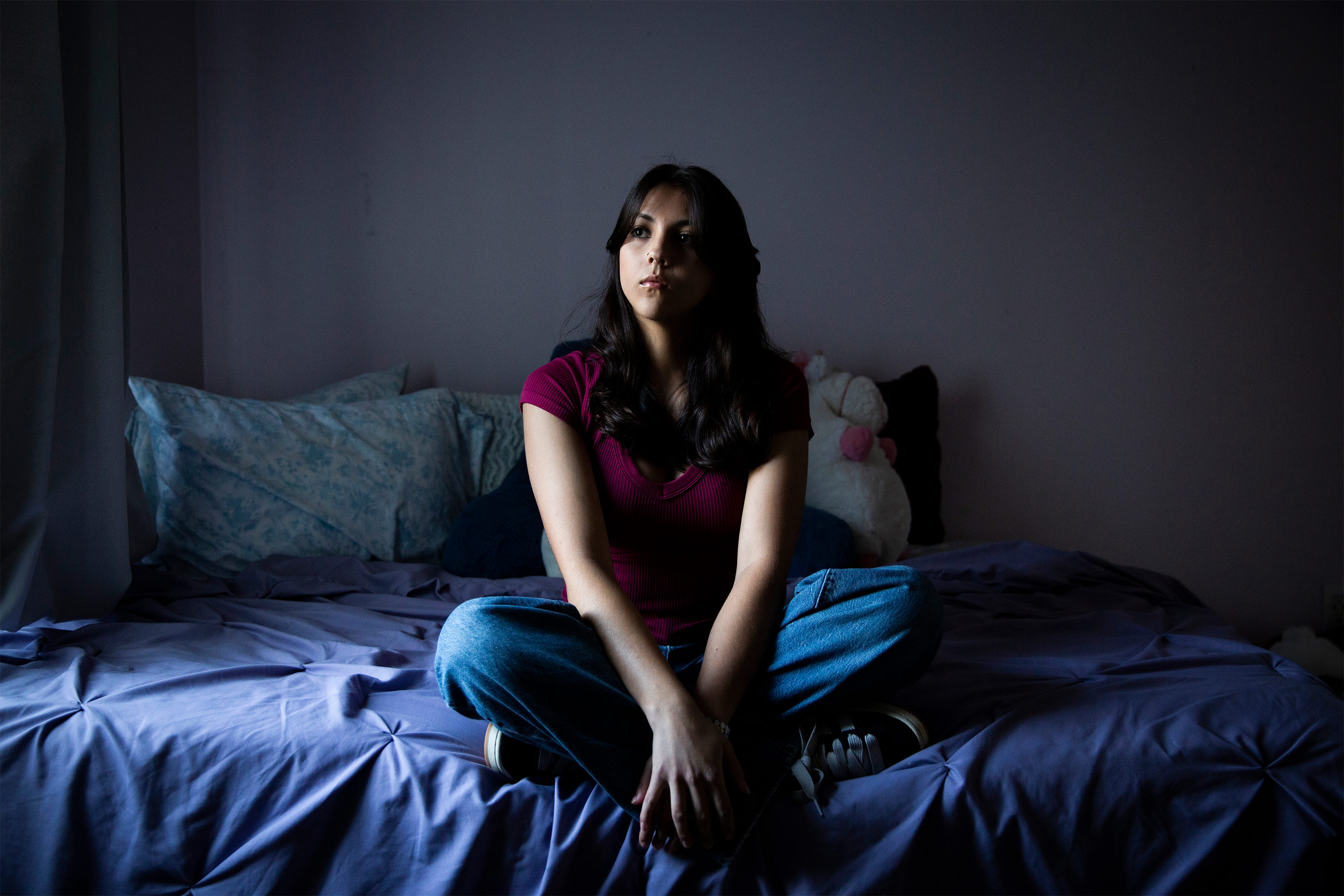The only immovable object on my weekly calendar is a Sunday-night basketball game. We play in a rented gym in Washington, D.C., usually at a high school, because we’re all conserving cartilage and the local middle schools don’t place much cushioning underneath the hardwood. The game has been running for more than 20 years, but it wasn’t always on Sunday nights, and none of the original players is still around. When people get hurt or move away, they’re replaced like planks on the Ship of Theseus. The continuity of the game is the important thing. It has to stay in motion, but not because anyone is trying to get somewhere. None of our regulars retains any ambition of climbing up to some higher echelon of organized basketball, at least I hope not. That’s part of the game’s magic. The enlivening competitive energies that it summons have no higher purpose. They are entirely internal to the game. Play in earliest childhood has this quality.
In 2015, Nick Rogers, now a sociologist at the University of Pittsburgh, conducted an ethnography of a pickup-basketball game. Like an anthropologist who heads into the bush to live with tribe members, Rogers became one of the game’s regulars. During breaks, he took hurried notes on his iPhone. (Nice work, if you can get it.) Rogers wanted to understand the paradox of pickup basketball. Its culture is aggressively masculine. Its players tend to be diverse in age, race, and class. They jostle one another, elbow to elbow. They collide with full force. They get loud. And yet, fights are relatively rare. Rogers believes that this carefully pitched intensity is enabled by a special set of norms. These aren’t etched into stone like the Ten Commandments, he told me, but the players he interviewed on the sidelines were all fluent in them, and even reverent toward them. This unspoken code keeps the game from tipping over into violence. It allows a small group of perfect strangers with little in common besides basketball to experience a flow state—a brief, but intense, form of group transcendence.
Ethnographers like him have infiltrated nearly every part of the sports world. They have embedded themselves in locker rooms, team buses, and even vendor booths at baseball-card shows. One slipped into the cold Pacific along California’s coast on early mornings, for months, to study how surfers take turns. Pickup basketball has attracted particular attention from sociologists because it is such a social game. To play it well, five people—which is to say, a group roughly the size of a rock band, a hunting party, or a nuclear family—must move together in a way that can be improvised in real time. They may all be strangers, and yet the ball will pass among them as though controlled by one mind. I’ve been an intermittent part of these games for most of my adult life without ever really thinking through what they represent, or how they come together. One aspect of the paradox of pickup basketball is its invisibility to those who play.
The sociologist Jason Jimerson conducted the first participant-observer study of pickup basketball, in the 1990s. He was inspired by a pair of writers who had traveled across the United States in search of the country’s best games. As a master’s student at the University of Virginia, Jimerson played every week at a gym near campus. He later published a paper describing how players maximized time on the court and quality of play. As a Ph.D. student at the University of Chicago, he returned to the subject for his dissertation. He began playing in a lunchtime game at the YMCA in Waukegan, a suburb just outside the city.
“Basketball started at the Y,” Jimerson told me. This one was right next to a courthouse. A judge and probation officer would sometimes play with someone who had recently been imprisoned. Between games, Jimerson dictated notes into a tape recorder. He even filmed some of the action. He wanted to compare different basketball cultures. He started playing at Cabrini-Green, a Chicago housing project that has since been torn down. When Jimerson’s colleagues told him that they feared for his safety, he sensed a touch of racism, but still, he took precautions. To endear himself to his fellow players, he bought a pair of expensive leather basketballs and brought them to games. “I knew there was a reason we let you study us,” one of them told him.
Jimerson has a poetic and plainspoken definition of sociology: He calls it “the science of people doing things together.” He took on pickup basketball as a research subject because it’s a very difficult thing that groups of people do together—even when they are very different from one another. If good feelings pass frequently among them, that helps. Rogers was interested in how players generate this atmosphere of fellow feeling. He had read Jimerson’s work; he was a prepared observer. He noticed that teammates maintained a strong norm of mutual encouragement, even—or especially—when one of them wasn’t very good. “Someone would miss a shot, and instead of their teammates saying, ‘Don’t shoot anymore, loser,’ they would say, ‘Keep shooting, shooter,’” Rogers told me. Players who dribbled endlessly, or attempted low-percentage fadeaway three-pointers, were also dealt with gently. Someone might communicate their displeasure by rolling their eyes, subtly, to other teammates or bystanders. But they wouldn’t confront those players directly.
To keep the larger game from breaking down, players also have to cooperate with their opponents, especially in the absence of neutral referees. The difficulty of this task depends on how many players are waiting on the sidelines, Jimerson told me. If there are just a few, then most people get to play again immediately whether they win or lose. As a consequence, they aren’t as competitive. The quality of the game diminishes, but there aren’t as many conflicts. The more players who are waiting, the higher the stakes, because losing may mean sitting through two games—and when stakes are too high, Jimerson said, “people really start fouling.”
The larger social order is most endangered during competitive games. Disputes may begin when players disagree about the score, or whether someone traveled or stepped out of bounds, but most happen when people argue about fouls. In pickup basketball, individual players must announce when they’ve been smacked, shoved, or otherwise touched inappropriately. Like any responsible sociologist, Jimerson is hesitant to traffic in universals, but he told me that nearly all pickup-basketball players have a norm against calling “ticky tack” fouls, which are too light to have really affected a person’s shot. The whole point of pickup basketball is to keep the game moving, he said. (Group flow states are a core interest for Jimerson; he has also done ethnographic research on musicians who perform in impromptu jam sessions.) This is why no one shoots free throws in pickup; it would interrupt the game. But so do extended arguments. In my Sunday-night game, we have an explicit norm that if a player says they were fouled, opposing players are supposed to respect the call, even if they disagree.
Such norms are standard in pickup basketball, but any player can tell you that they’re sometimes broken. Michael DeLand, a sociologist at Gonzaga University, told me that he observed extended disputes while playing in a long-running pickup game in Santa Monica. He chose it because it was more intimate than the world-famous games just down the coast at Venice Beach. He wanted to get to know the players. “There were Orthodox Jewish guys playing with businessmen, bartenders, bouncer types, rappers, and actors,” DeLand said. They arrived by foot, bike, bus, and car. Some became friends. DeLand noticed that when players engaged in extended arguments on the court, a folk legal process played out. People appealed to precedent. They made statements of evidence. Those who were waiting on the sidelines for the next game served as a jury, although their verdict wasn’t necessarily dispositive. Players on the blacktop would sometimes say, “Fuck you, you don’t get a say,” DeLand told me.
Rogers also studied disputes at the state-school gym where he played. He noticed upper limits to the intensity of verbal disagreement. Players were hesitant to use the sort of homophobic or misogynistic slurs that are common in, say, an online game of Call of Duty, because they would prolong the argument and make violence more likely. Even at their angriest, players would try to give off some signal that they weren’t taking the dispute so seriously, Rogers told me. They could be nose to nose, screaming at each other, but they would also smile subtly, or find another way to convey that they weren’t looking to escalate into a fight. In many instances, when players reached an impasse, someone would shoot to settle the matter. Rogers stressed that this was “more than just a semi-random way to resolve the dispute.” Players seemed to have a mystical belief that the basketball gods would dictate the outcome of the shot, expressed in an axiom familiar to almost all pickup-basketball players: “Ball don’t lie.”
Jimerson told me that he thinks of basketball as “a third place,” apart from home and work. In a third place, the usual social hierarchies are suppressed. People feel comfortable being themselves around strangers, and relating to others. That’s why a good regular game is a beautiful and fragile thing. I count myself lucky to have had a spot in one (or more) for nearly all of my adult life, and plan to keep it that way for as long as possible. I’ve known several guys who played into their 60s. It didn’t surprise me to learn that Jimerson is one of them. His last years on the court were some of his favorite. “Old guys have a different understanding of the game,” he told me. They know how to use back cuts and how to pass. They get into fewer disputes. They keep the game moving. The luckiest ones stay healthy long enough to play pickup with their adult kids.
Injuries give players a taste of dreaded, but inevitable, retirement. For the past few months, a friend I play with in a different game has been healing from a torn calf muscle. His doctor has barred him from the hardwood. He described this experience to me as a disturbance of the soul. Basketball is where he gets his exercise but also human connection. He shows up to the game with his full self, and he knows that others will too. “I love watching these grown-ass men limping around, giving every ounce of their energy to try to win,” he told me. On many holidays, he drops a message of gratitude into our WhatsApp group. He thanks us for the many blessings of the game and the microcommunity it has created. He talks about how much he cherishes it. Last week, he sent over a different message, an announcement. He described it as long overdue. He had been cleared to start stretching. By early July, he said, he’d be back on the court. It will be good to see him.





















Discussion about this post